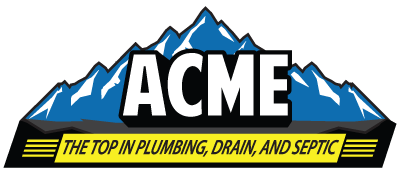How to Maintain an Old Plumbing System and Prevent Major Issues
Owning a home with an older plumbing system can feel like a ticking time bomb if you’re not proactive with maintenance. While vintage pipes and fixtures can add a certain charm, they also come with their share of risks. Aging pipes, outdated materials, and accumulated wear and tear can lead to leaks, low water pressure, and even major system failures if not properly cared for. However, with the right maintenance strategies, you can extend the life of your old plumbing system and prevent major issues from occurring.
Here’s a guide on how to maintain your old plumbing system and keep it in optimal condition.
1. Conduct Regular Inspections
One of the most important steps in maintaining an older plumbing system is performing regular inspections. Old pipes are prone to corrosion, leaks, and blockages, and catching problems early can save you from expensive repairs down the road.
What to Look For:
Signs of leaks around pipe joints, under sinks, or in walls and ceilings (e.g., water stains, damp spots, or mildew).
Rusty or discolored water, which could indicate corrosion in galvanized or iron pipes.
Low water pressure, which may signal blockages or deteriorating pipes.
Unusual sounds, such as banging or rattling when you turn on the faucets, which could indicate loose pipes or sediment buildup.
Schedule a professional inspection at least once a year to assess the condition of your pipes, water heater, and plumbing fixtures. A plumbing service like ACME Plumbing can identify potential issues you may have missed and recommend repairs before they escalate into major problems.
2. Address Leaks Immediately
Leaks, even small ones, can turn into costly problems if left unaddressed. Over time, minor leaks in an old plumbing system can weaken the structure of your home, damage walls, floors, and ceilings, and lead to mold growth.
What to Do:
Fix small leaks as soon as you notice them. Tighten loose connections, replace worn-out washers, and seal any gaps around joints with plumber's tape or sealant.
Monitor your water bill. If you notice an unexplained increase, you might have a hidden leak somewhere in your system that requires professional attention.
3. Replace Old Fixtures and Parts
In older homes, fixtures such as faucets, showerheads, and toilets may be outdated and inefficient. Not only can they contribute to water waste, but old fixtures are also prone to wear and tear that can lead to leaks or malfunctions.
Consider replacing:
Old faucets and showerheads with modern, water-efficient models to reduce water consumption and improve functionality.
Outdated toilets that may use excessive water per flush. New low-flow toilets can save significant amounts of water over time.
Worn-out washers and valves in faucets and toilets to prevent leaks.
4. Upgrade Old Pipes and Materials
Homes built before the 1960s may have plumbing systems that include galvanized steel, lead, or cast iron pipes. These materials corrode over time, leading to clogs, leaks, and water contamination. If you have lead pipes, they can pose serious health risks, as lead can leach into your drinking water.
When to Replace:
If your home still has lead or galvanized steel pipes, it’s time to consider replacing them with modern materials like copper, PVC, or PEX.
If you notice persistent issues such as low water pressure, discolored water, or frequent leaks, your old pipes may be at the end of their lifespan and require replacement.
5. Flush Your Water Heater
In older plumbing systems, sediment buildup in the water heater can cause inefficiency and reduce its lifespan. Regularly flushing the tank removes sediment and keeps your water heater running smoothly.
How Often to Flush:
If your home has hard water, sediment can accumulate faster, so flush your water heater once a year. If you notice signs of sediment buildup, such as rumbling noises or inconsistent water temperatures, flushing more frequently may be necessary.
6. Use Drain Cleaners Sparingly
Older pipes are often more fragile than modern plumbing materials. Using chemical drain cleaners too often can corrode your pipes and lead to leaks or blockages. Instead, opt for natural drain-cleaning methods, such as baking soda and vinegar, and use a plunger or drain snake to clear clogs.
Maintaining an old plumbing system requires regular attention and a proactive approach to problem-solving. By conducting routine inspections, addressing leaks promptly, upgrading outdated fixtures, and replacing old pipes when necessary, you can extend the life of your plumbing system and prevent costly repairs. A little preventive maintenance today can save you a lot of trouble—and money—down the line.
